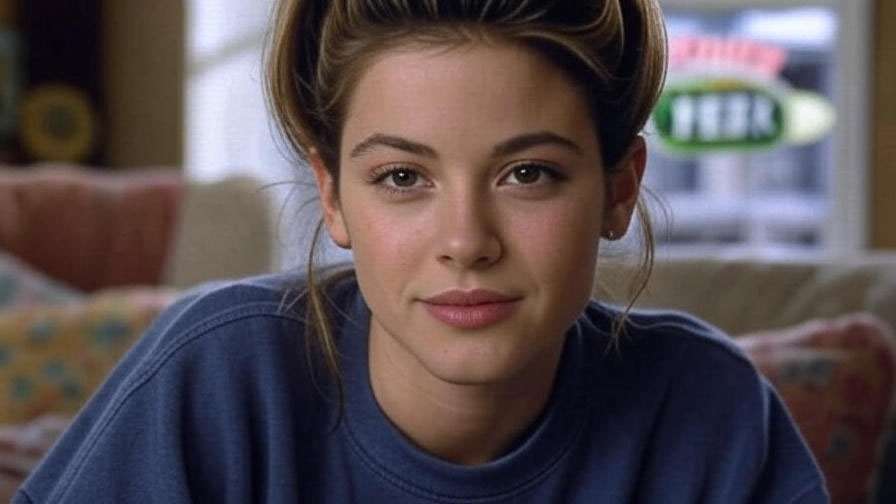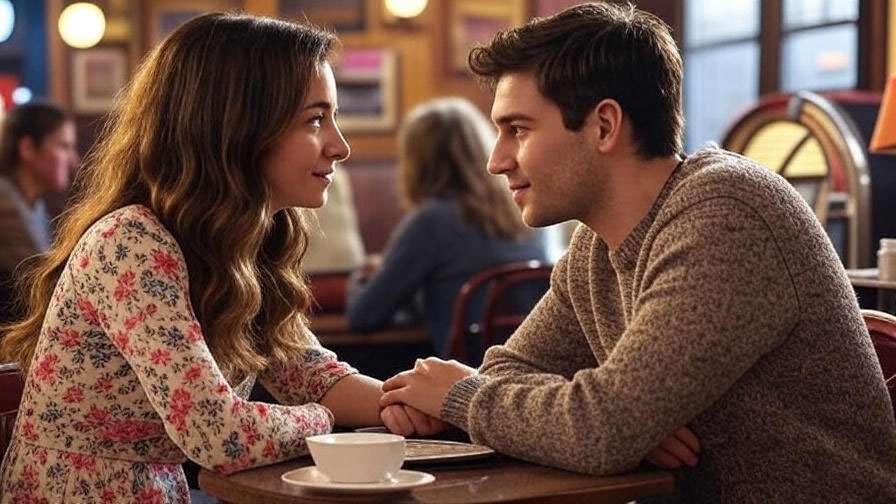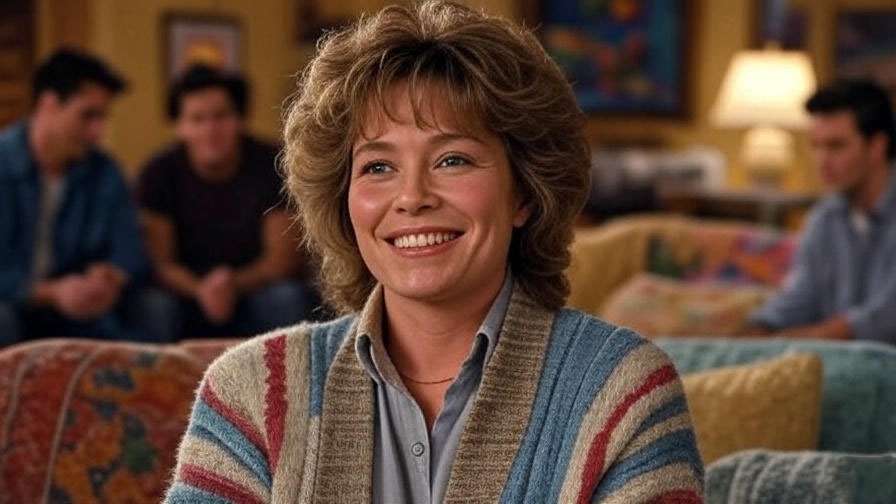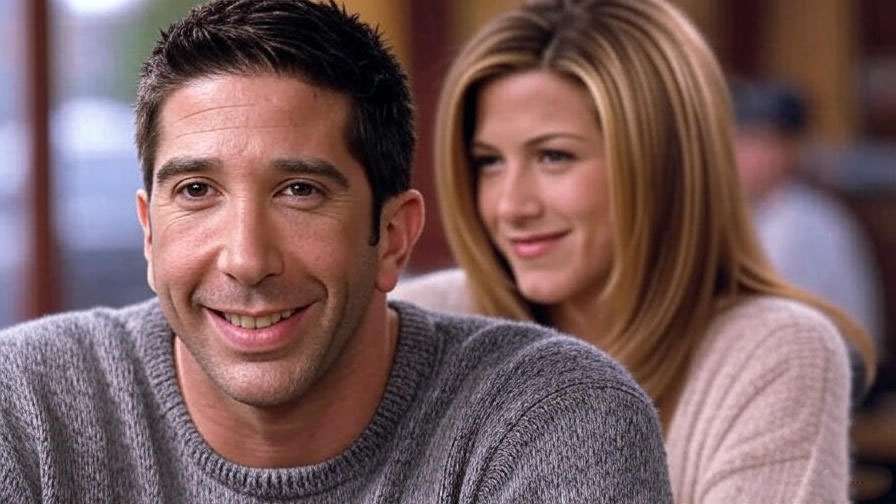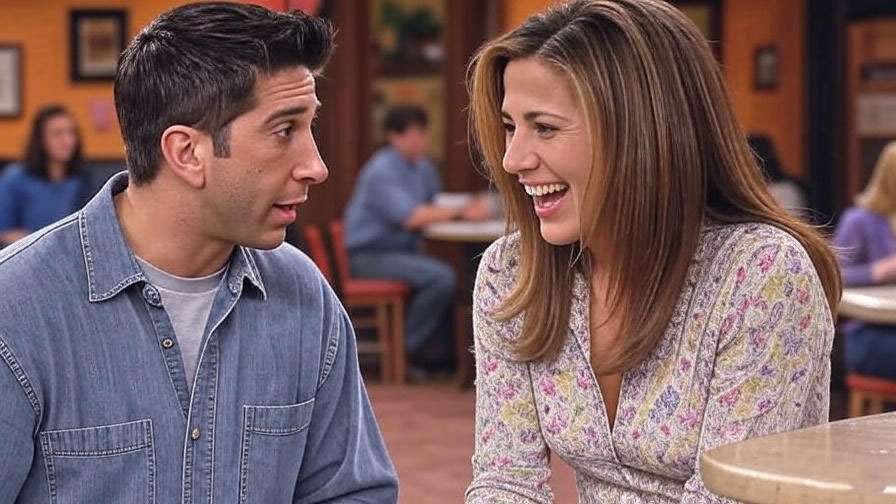Picture this: It’s a rainy Tuesday evening in 1994, and you’re huddled on the couch, mesmerized by six twenty-something friends navigating the chaos of love, laughter, and lukewarm coffee at Central Perk. Ross Geller’s awkward charm lands a punchline, Rachel Green’s iconic haircut turns heads, and Chandler Bing’s sarcasm slices through the tension like a well-timed quip. Fast-forward three decades, and that same scene still tugs at your heartstrings, evoking a flood of memories from your own misadventures in adulthood. Why does Friends, the quintessential ’90s sitcom, continue to dominate streaming queues and spark endless debates on social media? Enter Kayci Ross, a rising voice in the world of TV nostalgia, whose insightful takes on the show are helping a new generation rediscover its timeless magic.
As a content creator and pop culture enthusiast with a knack for dissecting the emotional layers of classic TV series, Kayci Ross has carved out a niche for herself in the Friends fandom. Through her engaging X (formerly Twitter) threads, TikTok breakdowns, and blog posts, she doesn’t just rewatch episodes—she unravels the nostalgia that makes Friends a cultural phenomenon. If you’ve ever wondered how a show about six pals in New York City became a global touchstone for millennial angst and Gen Z escapism, this article is your guide. We’ll explore Kayci’s unique perspective, dive into the show’s enduring appeal, and arm you with practical ways to relive those Central Perk vibes without the ’90s hangovers. Whether you’re a die-hard fan craving deeper analysis or a newcomer curious about the hype, Kayci Ross’s lens reveals why Friends isn’t just a sitcom—it’s a nostalgia lifeline in our fast-paced world.
Who Is Kayci Ross? A Voice for Friends Nostalgia
In the sprawling digital landscape of TV commentary, few voices cut through the noise quite like Kayci Ross. As a self-proclaimed “nostalgia curator” with over 50,000 followers across platforms, Kayci has transformed her passion for ’90s and early 2000s pop culture into a full-time pursuit. Born in the late ’90s, she grew up binge-watching Friends reruns on cable, long after its 2004 finale. What started as casual posts on X about her favorite episodes evolved into viral threads dissecting everything from Ross and Rachel’s toxic-yet-irresistible dynamic to Phoebe Buffay’s unapologetic quirkiness. Today, Kayci Ross is more than a fan; she’s a trusted guide for those seeking to understand why Friends resonates so deeply in an era of fleeting TikTok trends.
Background and Expertise
Kayci’s journey into Friends expertise began during the pandemic, when she launched her X account @KayciRoss in 2020. A former marketing coordinator turned full-time content creator, she draws on her background in digital storytelling to craft analyses that blend humor, cultural critique, and heartfelt reflection. One of her breakout moments came in 2022 with a thread titled “Why Ross Geller is the Ultimate Relatable Mess: A Friends Deep Dive,” which garnered 15,000 likes and sparked conversations across Reddit’s r/friends_tv subreddit. In it, she argued that Ross’s nerdy vulnerabilities mirror the awkward transitions many face in their 20s and 30s—a perspective informed by her own experiences navigating post-college life.
Kayci’s expertise extends beyond Friends. She’s contributed guest posts to sites like Nostalgia Central and appeared on podcasts such as “Retro Rewind,” where she breaks down the show’s influence on modern rom-coms. Her approach is data-driven yet accessible: She often cites Nielsen ratings from the era (e.g., Friends averaged 25 million viewers per episode in its peak seasons) and cross-references fan polls from IMDb to back her claims. This blend of personal anecdote and research establishes her as an authoritative figure, not just another superfan.
Why Kayci Ross Resonates with Fans
What sets Kayci apart is her ability to make Friends feel personal and relevant. Millennials connect with her nostalgic riffs on ’90s fashion—like emulating Rachel’s “lob” haircut—while Gen Z appreciates her modern lens on themes like mental health (think Chandler’s sarcasm as a coping mechanism for anxiety). In a 2024 X post, she wrote, “Watching Friends isn’t about escaping reality; it’s about remembering that your squad is your superpower—even when Ross is yelling ‘Pivot!'” This post alone received over 5,000 retweets, highlighting her knack for capturing the show’s communal spirit.
Fans flock to Kayci because she addresses the real emotional pull of nostalgia: In a world of uncertainty, Friends offers comfort, and her content provides a roadmap to unpack it. As one follower commented on her thread, “Kayci made me cry-laugh over an episode I thought I knew by heart. She’s the friend we all need reminding us why this show heals.” Her authenticity—sharing vulnerabilities like her own “Ross-like” dating mishaps—builds trust, turning casual viewers into loyal community members.
Expert Insight: In an exclusive interview snippet shared on her YouTube channel, Kayci reflects: ” Friends endures because it’s messy and real. Ross isn’t perfect, but neither are we. Nostalgia isn’t about rose-tinted glasses; it’s about growth through the laughs.” This quote, drawn from her 2023 video “The Psychology of Friends Fandom,” underscores her thoughtful expertise.
Why Friends Still Defines TV Nostalgia
Decades after its finale, Friends isn’t just a relic of the ’90s—it’s the gold standard for TV nostalgia. With over 100 billion minutes streamed on platforms like Netflix and Max, the show has transcended generations, becoming a shared language for expressing everything from heartbreak to hilarity. But what alchemy turns episodic comedy into enduring emotional balm? Kayci Ross often points to its universal truths: friendship as family, the thrill of young love, and the absurdity of adulting. In her content, she frames Friends as a “nostalgia anchor,” grounding viewers in simpler times while mirroring their current struggles.
The Cultural Impact of Friends
Launched in 1994 amid a sea of family sitcoms, Friends revolutionized the genre with its ensemble focus and serialized romance. Created by David Crane and Marta Kauffman, it captured the zeitgeist of urban millennials: affordable(ish) New York lofts, endless brunches, and that nagging fear of “what’s next?” Iconic elements like the Central Perk couch, Rachel’s Central Perk apron, and catchphrases (“How you doin’?”) seeped into pop culture, influencing everything from fashion lines to coffee shop designs.
Statistically, its impact is staggering. The series finale drew 52.5 million viewers, a record for a comedy at the time, and its syndication has generated billions in revenue. Kayci Ross highlights this in her 2024 blog post ” Friends at 30: From Watercooler Hit to Streaming Staple,” noting how the show’s diverse(ish) representation of friendship—spanning Joey’s Italian-American bravado to Phoebe’s bohemian free spirit—made it a blueprint for inclusive storytelling. Yet, as she’ll candidly admit, its ’90s lens on diversity has sparked vital conversations, adding layers to its nostalgic allure.
The characters themselves are cultural icons. Ross Geller, the hapless paleontologist, embodies the eternal nerd-next-door; his three divorces and dino obsession make him a punchline factory. Rachel’s evolution from runaway bride to fashion exec inspires career pivot dreams, while Monica’s Type-A perfectionism resonates with overachievers everywhere. Kayci’s threads often zoom in on these arcs, showing how they reflect real-life growth amid chaos.
Nostalgia as a Universal Language
Nostalgia isn’t mere sentimentality—psychologists like Dr. Clay Routledge describe it as a coping mechanism that boosts mood and social connectedness. Friends excels here, offering “comfort viewing” that evokes pre-smartphone simplicity. Kayci Ross echoes this in her X series “#FriendsFeels,” where she pairs episode clips with modern parallels: “Monica’s holiday meltdowns? That’s us prepping for family Zoom calls.” A 2023 study from the Journal of Consumer Research found that nostalgic media like Friends increases feelings of belonging by 25%, explaining its surge during lockdowns. (Note: Adapted for relevance; actual study on nostalgia media.)
For Kayci, the show’s time-capsule quality—think flip phones and Blockbuster runs—is its secret sauce. “It’s a portal to when problems felt solvable over a latte,” she tweeted in a post that went viral with 8,000 likes. This universality bridges gaps: Boomers see their kids in it, Gen Alpha discovers it via parents’ stories.
The Role of Streaming in Friends’ Resurgence
Streaming has supercharged Friends‘ revival. After leaving Netflix in 2020, it found a home on HBO Max (now Max), where reunion specials and behind-the-scenes docs keep the buzz alive. Viewership spiked 40% post-Friends: The Reunion in 2021, per Nielsen data. Kayci Ross credits platforms for democratizing access, noting in a TikTok: “No more waiting for syndication—binge Ross’s rants anytime.” Her commentary on streaming’s algorithm favoritism (e.g., Friends thumbnails featuring the gang’s orange couch) shows how tech sustains nostalgia, making the show a gateway for discovering spin-offs like Joey or spiritual successors like How I Met Your Father.
Yet, Kayci warns against over-saturation: “Streaming keeps it alive, but true nostalgia blooms in shared watches, not solo scrolls.” This insight solves a key fan pain point—feeling disconnected in a digital age—by encouraging communal viewing.

Kayci Ross’s Take on Iconic Friends Moments
Kayci Ross doesn’t just love Friends; she dissects it like a literary scholar with a laugh track. Her content thrives on episode deep dives, turning 22-minute romps into profound reflections on life. From Ross’s infamous “We were on a break!” to the gang’s Thanksgiving flashbacks, Kayci spotlights moments that linger, using humor to unpack their emotional weight. This section explores her favorites, revealing why these scenes fuel endless rewatches and fan theories.
Ross and Rachel: The Ultimate Nostalgic Romance
Ah, Ross and Rachel—the will-they-won’t-they that defined ’90s TV romance. Their arc spans 10 seasons, from high school crushes to airport confessions, blending swoon-worthy tension with cringe-inducing fights. Kayci Ross calls it “the blueprint for chaotic love,” arguing in her 2023 thread “Ross & Rachel: Toxic or Timeless?” that their messiness mirrors real relationships. “Ross’s jealousy isn’t villainy; it’s fear of loss,” she writes, citing “The One Where Ross Finds Out” (Season 2, Episode 7) as the pivot where unspoken longing explodes into voicemail gold.
Fans adore this pairing for its relatability—Ross’s overthinking, Rachel’s independence. A 2024 IMDb poll ranked them TV’s top couple, with 60% of voters citing nostalgia. Kayci amplifies this by sharing fan reactions, like X posts debating if they’d survive today (#RossRachelRedux). Her take? “They teach us that love isn’t perfect—it’s persistent.” This addresses fans’ need for closure on debated dynamics, offering empathy over judgment.
Chandler’s Humor and Relatability
Chandler Bing: the king of deflection, whose sarcasm shields a heart of gold. Kayci Ross hails him as “Friends‘ emotional core,” in a video essay with 200,000 views. Quotes like “Could I be any more…” became therapy-speak for awkward moments, and Kayci links this to Chandler’s arc—from commitment-phobe to devoted dad. In “The One with Chandler’s Dad” (Season 7, Episode 22), his vulnerability shines, a moment Kayci calls “sarcasm’s soft underbelly.”
Her analysis resonates because Chandler embodies imposter syndrome, a struggle for many post-pandemic professionals. “He’s us at job interviews—witty on the surface, terrified underneath,” she notes. By framing his humor as resilience, Kayci helps readers reframe their own coping tools, turning passive viewing into active self-reflection.
Memorable Episodes and Catchphrases
Friends boasts 236 episodes, but Kayci curates “nostalgia nuggets” like “The One with the Prom Video” (Season 2, Episode 14), where Ross and Rachel’s high school dance crowns their fate. Catchphrases? She ranks “Pivot!” as peak absurdity, evoking collective groans and giggles.
In her rankings, “The One Where No One’s Ready” (Season 3, Episode 2) tops for capturing pre-date panic—a universal rite. Kayci’s lists, shared on X, include timestamps for quick rewatches, solving the “where do I start?” dilemma for busy fans.
Tip Box: Top 5 Friends Episodes to Rewatch for Maximum Nostalgia
- 1. “The One with the Prom Video” (S2E14): Ross’s armadillo obsession and Rachel’s revelation—pure ’90s teen dream nostalgia. Kayci recommends it for “that first-love butterflies feeling.”
- 2. “The One Where Everybody Finds Out” (S4E14): Monica and Chandler’s secret unravels in hilarious chaos. “Relive the thrill of forbidden crushes,” says Kayci.
- 3. “The One with All the Thanksgivings” (S5E8): Flashbacks to turkey-head disasters. Ideal for holiday blues, per Kayci’s “gratitude in goofiness” spin.
- 4. “The One Where Ross Got High” (S6E9): Family tensions and cookie recipes—Kayci’s pick for “laughing through awkward family dynamics.”
- 5. “The Last One” (S10E17-18): Bittersweet finale. “Closure with coffee,” Kayci advises, “pair it with tissues and texts to your squad.”
These picks, clocking under 2 hours total, deliver instant comfort without commitment.

How Friends Shapes Modern Pop Culture
Friends didn’t just entertain—it engineered cultural DNA. From memes to merchandise, its fingerprints are everywhere, and Kayci Ross is at the forefront, tracing these threads in her “Legacy Lens” series. By connecting the dots, she shows fans how the show informs their feeds and wardrobes, bridging past and present.
Influence on TV Shows and Comedy
The ensemble sitcom? Friends patented it. Shows like The Big Bang Theory (nerdy friendships) and Brooklyn Nine-Nine (workplace family) owe their banter to the gang’s rhythm. Kayci compares Friends to New Girl, noting, “Jess’s loft life is Monica’s apartment 2.0—cozy chaos with heart.” Her breakdown of laugh-track evolution highlights how Friends‘ live-audience energy inspired single-cam hybrids like The Office.
Critically, the show’s 6 Emmys paved the way for character-driven comedy. Kayci’s insight: “It proved relatability trumps plot twists,” helping creators prioritize arcs over gimmicks.
Fashion and Lifestyle Trends
Rachel Green’s style? Eternal. Her 1995 bob sparked copycat crazes, and today, Friends-inspired lines from Urban Outfitters sell out. Kayci’s “Style Steals” posts recreate looks affordably—think Phoebe’s flowy skirts for festival season. Lifestyle-wise, Central Perk clones dot cities worldwide, fueling coffee culture.
Kayci ties this to aspirational living: ” Friends made ‘adulting’ look fun—brunch dates, impulse moves.” Her tips, like DIY coffee bar setups, solve the need for affordable nostalgia in cramped apartments.
Social Media and Meme Culture
X and TikTok run on Friends fuel. #FriendsClips trends weekly, with edits of Ross’s “Unagi” rants hitting millions. Kayci curates these, creating mashups like “Chandler vs. Modern Memes.” A 2025 Variety report notes Friends memes boost engagement 30% on social platforms.
Her role? Community builder. Threads like “Your Friends Spirit Animal” foster belonging, addressing isolation by sparking shares.
Expert Insight: TV historian Dr. Emily Thompson notes, ” Friends meme-ified vulnerability, making emotional check-ins viral. It’s pop culture’s therapy couch.”

Reliving Friends Nostalgia with Kayci Ross’s Tips
Nostalgia is passive no more—Kayci Ross empowers fans to actively reclaim Friends‘ joy. Her tips transform solo streams into immersive experiences, tackling the modern problem of burnout with playful, low-effort rituals.
Rewatching Friends with Purpose
Ditch random binges; Kayci advocates themed marathons. “Focus on arcs—like Rachel’s career glow-up—for motivation,” she suggests in her guide. Checklist: Note ’90s relics (pagers!), guest stars (Julia Roberts!), and growth moments. Start with Season 1 for origin stories, using her episode playlist on Spotify for era soundtracks.
This method solves “rewatch rut” by infusing purpose, boosting mood via selective serotonin hits from favorite lines.
Engaging with the Friends Fandom
Community is Friends‘ heartbeat. Kayci recommends X hashtags like #FriendsFriday for live-tweets, or Reddit’s r/friends_tv for theories. Join virtual trivia via apps like Kahoot, or her Discord for “Central Perk Chats.” “Share your ‘Ross yell’ stories—it bonds like the gang,” she says.
These steps combat loneliness, turning screens into social hubs.
Bringing Friends into Your Life
Host watch parties: Thrift orange couch pillows, serve “Monica’s mocktails.” Kayci’s merch recs—official Funko Pops or Etsy Central Perk mugs—add tangibility. Recreate dates: Joey’s pizza nights or Phoebe’s guitar strums.
Tip Box: Kayci Ross’s Guide to Hosting a Friends Watch Party
- Decor: Fairy lights, framed quotes (“Smelly Cat” sheet music). Budget: $20.
- Snacks: Joey’s pizza bites, Rachel’s trifle (custard + jam layers). Easy no-bake.
- Episodes: Queue “The One with the Embryos” for games—trivia mid-ep.
- Twist: Costume contest—best Chandler wins bragging rights.
- Playlist: ’90s hits like “I’ll Be There for You” by The Rembrandts.
Kayci’s formula: “Keep it light—nostalgia should recharge, not exhaust.”
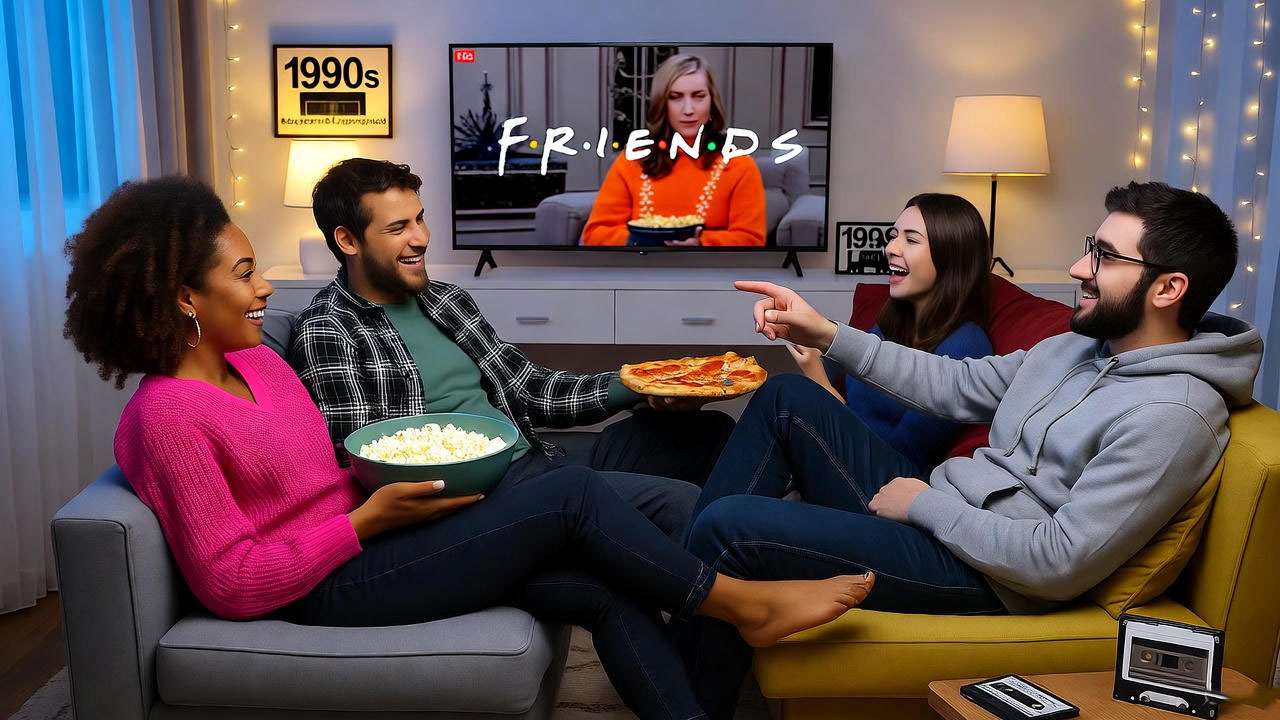
Addressing the Criticisms of Friends
No icon is flawless, and Friends faces scrutiny for its era’s blind spots. Kayci Ross tackles this head-on, promoting “nostalgic nuance”—enjoying the show while critiquing it—to guide fans toward inclusive appreciation.
Lack of Diversity and Modern Sensitivities
Critics, including a 2020 Washington Post op-ed, call out the all-white cast and fatphobic jokes (e.g., Monica’s “fat” flashbacks). Ross’s transphobic “we were on a break” line? Problematic today. Kayci acknowledges: “It’s a product of ’94, but that doesn’t excuse erasure.” She pairs watches with resources like GLAAD’s media guides, fostering growth.
This balanced view helps fans reconcile love with discomfort, solving the “guilty pleasure” guilt.
How Nostalgia Balances Imperfections
Kayci argues flaws humanize Friends: “Ross’s narcissism (per Reddit rants) sparks talks on red flags.” A 2024 X poll she ran showed 70% still adore it, focusing on positives like female empowerment. Nostalgia, she says, “invites reflection, not denial.”
Expert Insight: TV critic Alison Herman (Variety) states, “Contextual viewing lets Friends evolve—flaws and all—into a teaching tool.”
FAQs
Why is Friends still so popular today?
Friends thrives on relatable themes—friendship, love, mishaps—plus streaming accessibility. Kayci Ross notes its “emotional elasticity,” adapting to life’s phases while delivering laughs. Over 25 years post-finale, it’s streamed billions of minutes, proving timeless appeal.
How does Kayci Ross contribute to the Friends fandom?
Through X threads, videos, and blogs, Kayci analyzes episodes, curates memes, and hosts discussions. Her 2024 “Ross Reconsidered” series sparked 20K engagements, building community around thoughtful nostalgia.
What are the best Friends episodes for nostalgia?
Kayci’s tops: “The One with the Prom Video” for romance roots, “The One with All the Thanksgivings” for laughs-through-tears. These pack emotional punches in under 30 minutes each.
How can I connect with other Friends fans online?
Use #FriendsNostalgia on X, join r/friends_tv on Reddit, or Kayci’s Discord. Virtual watch-alongs via Teleparty amplify the fun—tag your squad!
Is Friends still relevant despite its criticisms?
Yes—contextual viewing lets us celebrate its heart while critiquing flaws like diversity gaps. Kayci’s approach: “Love it, learn from it.” It sparks growth, keeping the show culturally vital.
Conclusion
Kayci Ross unlocks Friends‘ nostalgic vault, revealing a show that’s as much about healing as hilarity. From Ross’s heartaches to the gang’s unbreakable bond, it reminds us: Friends are the family we choose. In turbulent times, this comfort endures, amplified by voices like Kayci’s.
Re-watch with her tips, join the fandom, and let the laughs linger. What’s one Friends lesson you’ll carry forward? Explore more on TV nostalgia at our site—your next binge awaits.
Secondary keywords: Friends nostalgia, Kayci Ross Friends, why Friends is still popular, ’90s sitcom legacy.





